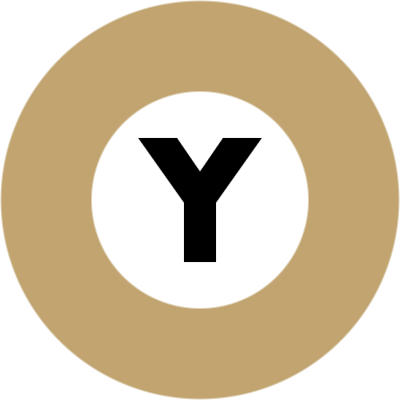Tsukiji Station on:
[Wikipedia]
[Google]
[Amazon]
is a subway station on the Tokyo Metro Hibiya Line in
File:Tsukiji stn ticket gates - Oct 28 2018 05-44PM.jpeg, Ticketing machines
File:Tsukiji stn Hibiya Line platforms - Oct 28 2018 05-45PM.jpeg, Platforms
 * Shintomichō Station (
* Shintomichō Station ( Tokyo Metro Yurakucho Line) (approximately 2 minutes' walk)
The station is located in the
Tokyo Metro Yurakucho Line) (approximately 2 minutes' walk)
The station is located in the
''Tokyo Metro'' Retrieved 18 January 2009 On the eastern side of the station is the Tsukiji Hongan-ji, a pilgrimage site for
Tokyo Metro station information
{{Coord, 35.6681, N, 139.7725, E, type:railwaystation_region:JP, display=title Buildings and structures in Chūō, Tokyo Railway stations in Tokyo Railway stations in Japan opened in 1963 Tokyo Metro Hibiya Line Tsukiji
Tsukiji
Tsukiji (築地) is a district of Chūō, Tokyo, Japan. Literally meaning "reclaimed land", it lies near the Sumida River on land reclaimed from Tokyo Bay in the 18th century during the Edo period. The eponymous Tsukiji fish market opened in 193 ...
, Chūō, Tokyo
is a Special wards of Tokyo, special ward that forms part of the heart of Tokyo, Japan. The ward refers to itself in English as Chūō City. It was formed in 1947 as a merger of Kyōbashi, Tokyo, Kyobashi and Nihonbashi wards following Tokyo C ...
, Japan, operated by the Tokyo subway operator Tokyo Metro.
Lines
Tsukiji Station is served by theHibiya Line
The is a subway line in Tokyo, Japan, owned and operated by Tokyo Metro. The line was named after the Hibiya area in Chiyoda's Yurakucho district, under which it passes. On maps, diagrams and signboards, the line is shown using the color silve ...
, and is numbered H-11. It is located 10.7 km from the starting point of the line at .
Station layout
Tsukiji station has a simpleside platform
A side platform (also known as a marginal platform or a single-face platform) is a platform positioned to the side of one or more railway tracks or guideways at a railway station, tram stop, or transitway. A station having dual side platforms ...
arrangement with two tracks. Platform 1 serves southbound trains to Ginza
Ginza ( ; ja, 銀座 ) is a district of Chūō, Tokyo, located south of Yaesu and Kyōbashi, west of Tsukiji, east of Yūrakuchō and Uchisaiwaichō, and north of Shinbashi. It is a popular upscale shopping area of Tokyo, with numerous intern ...
, whilst platform 2 serves northbound trains to Ueno
is a district in Tokyo's Taitō Ward, best known as the home of Ueno Park. Ueno is also home to some of Tokyo's finest cultural sites, including the Tokyo National Museum, the National Museum of Western Art, and the National Museum of Na ...
and .
Access to the station is provided by two sets of entrances and exits, with a total of four points of entry in total. Exits 1 and 2 are on opposite sides of Route 50 at the southern end of the station near the fish market. Exits 3 and 4 are also on opposite sides of the same road but at the northern end of the station.
Platforms
History
Tsukiji Station opened on 28 February 1963. The station facilities were inherited by Tokyo Metro after the privatization of the Teito Rapid Transit Authority (TRTA) in 2004.Surrounding area
 * Shintomichō Station (
* Shintomichō Station ( Tokyo Metro Yurakucho Line) (approximately 2 minutes' walk)
The station is located in the
Tokyo Metro Yurakucho Line) (approximately 2 minutes' walk)
The station is located in the Tsukiji
Tsukiji (築地) is a district of Chūō, Tokyo, Japan. Literally meaning "reclaimed land", it lies near the Sumida River on land reclaimed from Tokyo Bay in the 18th century during the Edo period. The eponymous Tsukiji fish market opened in 193 ...
neighbourhood of Chūō, Tokyo
is a Special wards of Tokyo, special ward that forms part of the heart of Tokyo, Japan. The ward refers to itself in English as Chūō City. It was formed in 1947 as a merger of Kyōbashi, Tokyo, Kyobashi and Nihonbashi wards following Tokyo C ...
. Only a few blocks south of the station (about 150 m) lies Tsukiji fish market, the largest seafood market in the world.Guide to sightseeing''Tokyo Metro'' Retrieved 18 January 2009 On the eastern side of the station is the Tsukiji Hongan-ji, a pilgrimage site for
Buddhists
Buddhism ( , ), also known as Buddha Dharma and Dharmavinaya (), is an Indian religion or philosophical tradition based on teachings attributed to the Buddha. It originated in northern India as a -movement in the 5th century BCE, and gra ...
worldwide.
References
External links
Tokyo Metro station information
{{Coord, 35.6681, N, 139.7725, E, type:railwaystation_region:JP, display=title Buildings and structures in Chūō, Tokyo Railway stations in Tokyo Railway stations in Japan opened in 1963 Tokyo Metro Hibiya Line Tsukiji